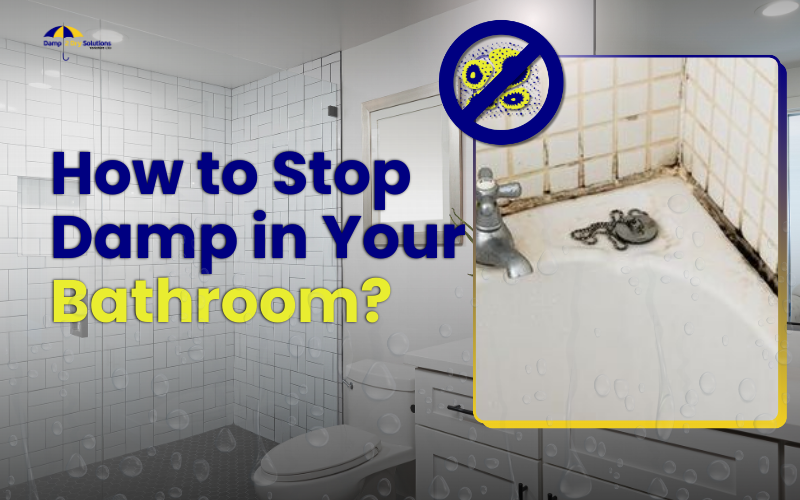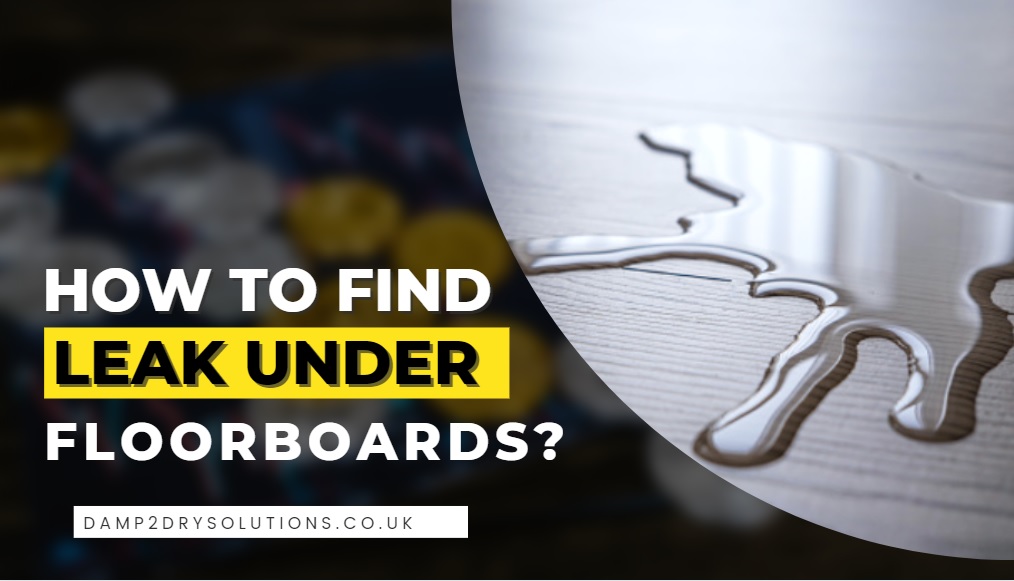When buying or renovating a structure, what do we look for in the bathroom? Whether the taps, showers, and toilets are working properly or not, right? You may also check if it’s clean and well-lit, etc.
Here’s what happens a few months later: you step into your bathroom and slowly see the paint peeling off, a regular musty odour, foggy mirror that won’t clear, and black mould starting to creep up on the ceiling.
This is the problem that 60% of UK residents have faced at some point, and for 31% of people, it’s an ongoing issue. Worst, the bathroom dampness that was not once thought about can later cause structural damage, costly repairs, and many health risks.
So how can building owners in the UK deal with bathroom dampness? It’s not as complicated as you might think. All you need is the right approach that can help your bathroom stay dry, fresh, and mould-free.
At Damp 2 Dry Solutions, we’ve helped thousands of UK homeowners eliminate damp problems permanently. With this experience, we are bringing you an expert guide that can help you prevent and stop dampness in your bathroom effectively.
Let’s get started!
Why Does Damp Occur in Bathrooms? (& How to Prevent It)
Bathrooms are the most moisture-prone areas in any property, and an average shower produces approximately 1.5 litres of moisture in the air. If this extra humidity is not controlled it causes condensation, mould growth and structural damage.
The common causes of bathroom damp include:
- Poor ventilation – Lack of airflow causes condensation to settle on walls and ceilings.
- Leaks – Dripping taps, faulty pipes, or poor grouting let moisture seep into walls and floors.
- Cold surfaces – Cold bathroom surfaces attract condensation, increasing damp risks.
- Incorrect materials – Non-waterproof paints, flooring, and walls absorb moisture, leading to long-term damage.
Now, let’s dive into proven methods to stop damp in your bathroom for good.
Tip 1: Control Moisture and Improve Ventilation
Managing moisture and ensuring proper ventilation are the most effective ways to prevent bathroom dampness. Excess humidity from showers and baths quickly leads to condensation buildup, which can cause mould and structural damage if not addressed.
- Increase Airflow: Always allow moisture to escape by opening a window slightly for at least 10–15 minutes after bathing.
- Use an Extractor Fan: If your bathroom lacks windows, an extractor fan with a humidity sensor is essential. Let it run for at least 15–20 minutes after each shower to remove excess moisture from the air.
- Keep the Bathroom Warm: Condensation forms on cold surfaces, so installing underfloor heating or a heated towel rail can help prevent damp spots.
- Use a Dehumidifier: In damp-prone homes, especially older properties or those near the coast, a small dehumidifier can help absorb excess moisture.
- Wipe Down Surfaces: After bathing, quickly dry tiles, mirrors, and countertops to prevent standing water from becoming a breeding ground for damp and mould.
- Apply Anti-Condensation Paint: This special paint forms a water-repelling barrier on walls, preventing moisture from seeping in.
📞 Need expert help? Book a professional damp survey with Damp 2 Dry Solutions – Ring 01484367130 or 07401553791 for a no-obligation assessment.
Tip 2: Fix Leaks & Structural Issues
Even the best ventilation won’t help if leaks or structural problems allow moisture to seep into your home.
- Fix Dripping Taps & Leaky Pipes: A small leak can escalate into major damp problems. Inspect pipes, taps, and toilet connections regularly.
- Check Sealant & Grouting: Cracked grout and worn-out sealant let water seep behind tiles. Reapply waterproof sealant every 2-3 years to prevent damage.
- Inspect Window Frames & Walls: Gaps in window frames or cracks in walls allow water ingress. Check and repair these annually.
- Install a Damp-Proof Course (DPC): If your home has rising damp, a damp-proof course is essential to stop moisture from travelling up your walls.
Lastly, don’t forget to check for hidden plumbing issues. Leaks behind walls or under floors often go unnoticed. If you suspect hidden damp, call a professional for an inspection.
Tip 3: Choose the Right Materials to Prevent Damp
This tip is special for people renovating their bathroom or entirely building a new one. It’s time you pick the right materials that can significantly reduce the dampness. For example
- Opt for waterproof flooring, such as vinyl, ceramic tiles, or waterproof laminate that doesn’t absorb moisture.
- Look for mould-resistant paint for bathrooms that prevents fungal growth.
- Lastly, be mindful with shower screens and curtains. Poorly fitted curtains or screens can allow water to splash onto the walls and floors. Ensure that they are securely in place.
Own a cellar? Check out our blog on how to upgrade your cellar for everyday use!
Tip 4: Deal With Mould Growth At An Early Stage
If left untreated, mould can spread quickly in damp conditions.
- To prevent this, it is advisable to use mould resistant grout, sealants and paints to create a barrier against moisture.
- Do not use regular household cleaners because they are unable to kill all the mould spores; vinegar and water or professional mould cleaner will do it better.
- After cleaning, make sure to vent the area well to stop mould from coming back by letting moisture and airborne spores escape.
Interesting Read: Highest Condensation Levels We’ve Ever Seen!
Tip 5: Long-Term Damp Prevention Tips
Maintaining a damp-free bathroom requires consistent effort:
- Check for leaks every 3–6 months.
- Use an extractor fan or open windows after every shower.
- Place moisture-absorbing silica gel packs in damp-prone areas.
- Keep your bathroom warm to prevent condensation buildup.
- Choose water-resistant materials for flooring, walls, and ceilings.
Get Expert Help!
We get it: dealing with bathroom dampness is frustrating. However, the right combination of good ventilation, maintenance techniques, and moisture control can change this picture completely.
If dampness is already a problem in your home, professional help could make all the difference. At Damp 2 Dry Solutions, we are an IOSH Certified Company with years of experience in damp-proofing across the UK. We offer a no-obligation damp survey, where our experts assess the extent of the problem and provide tailored solutions.
Don’t wait until the damage gets worse. Contact us today for personalised expert advice that keeps your bathroom safe from damp problems!





